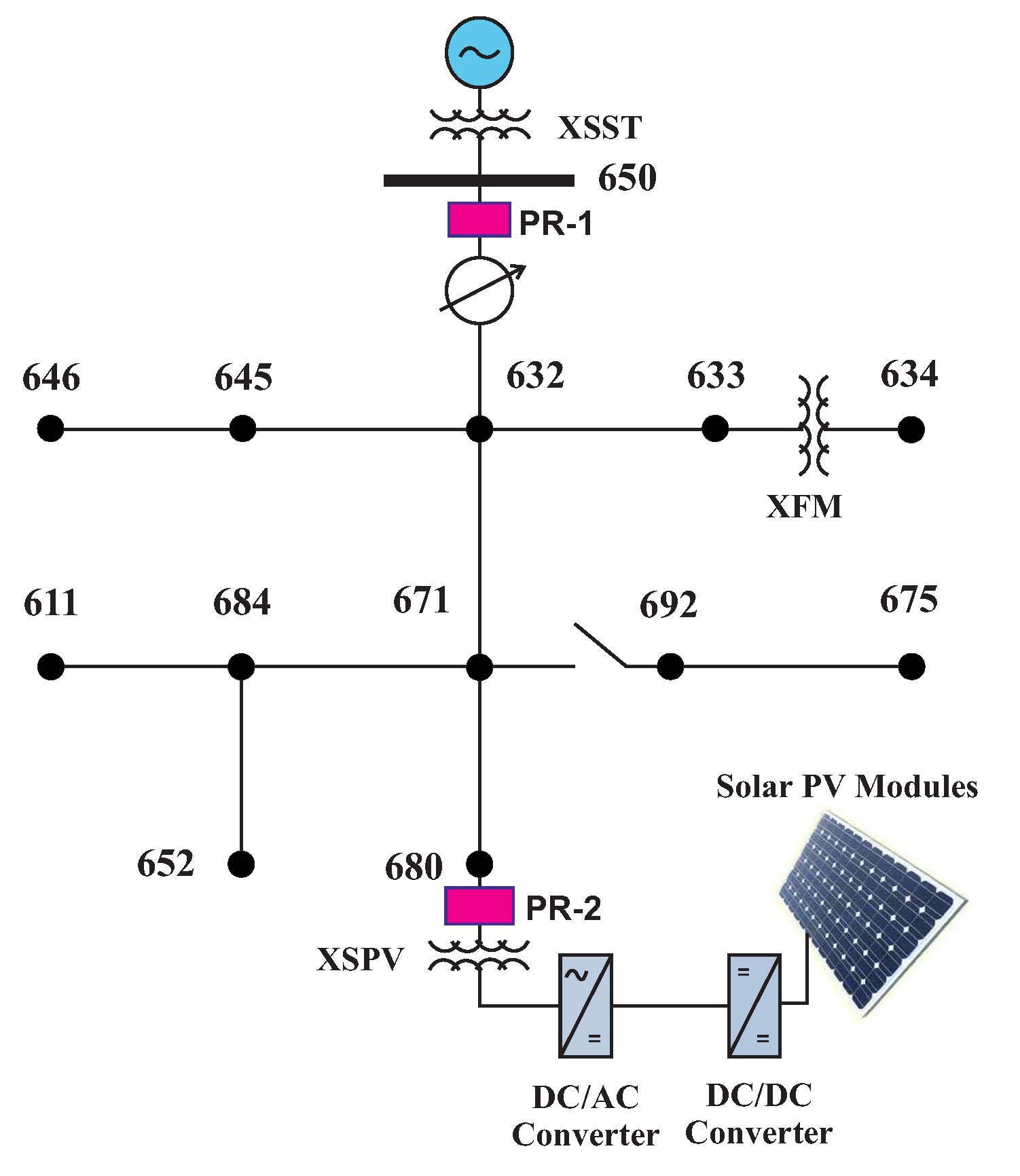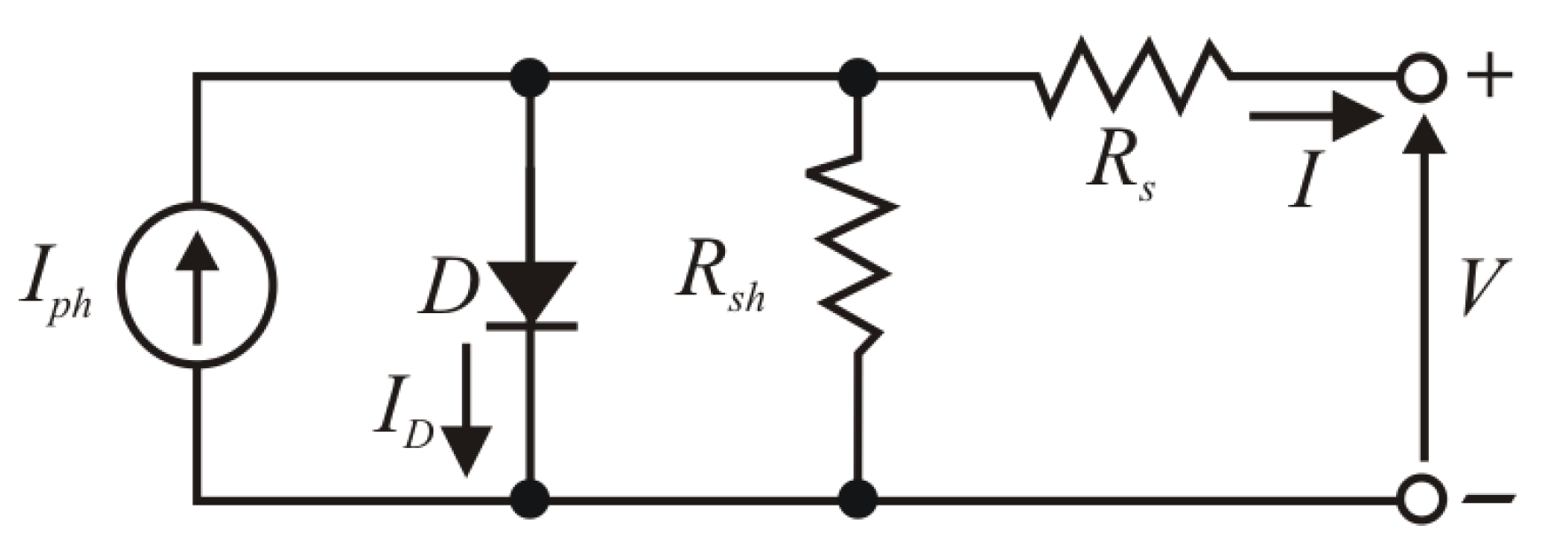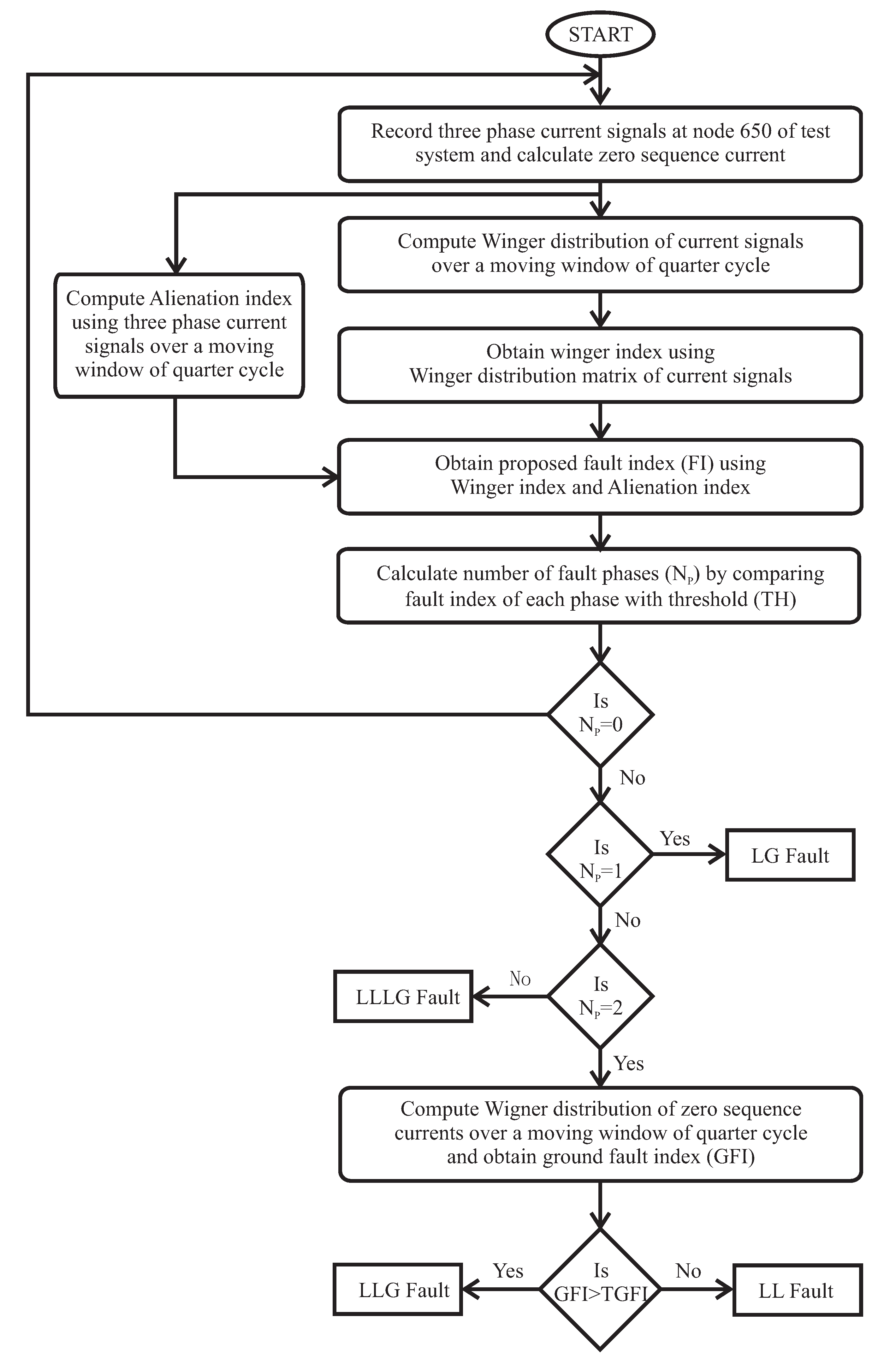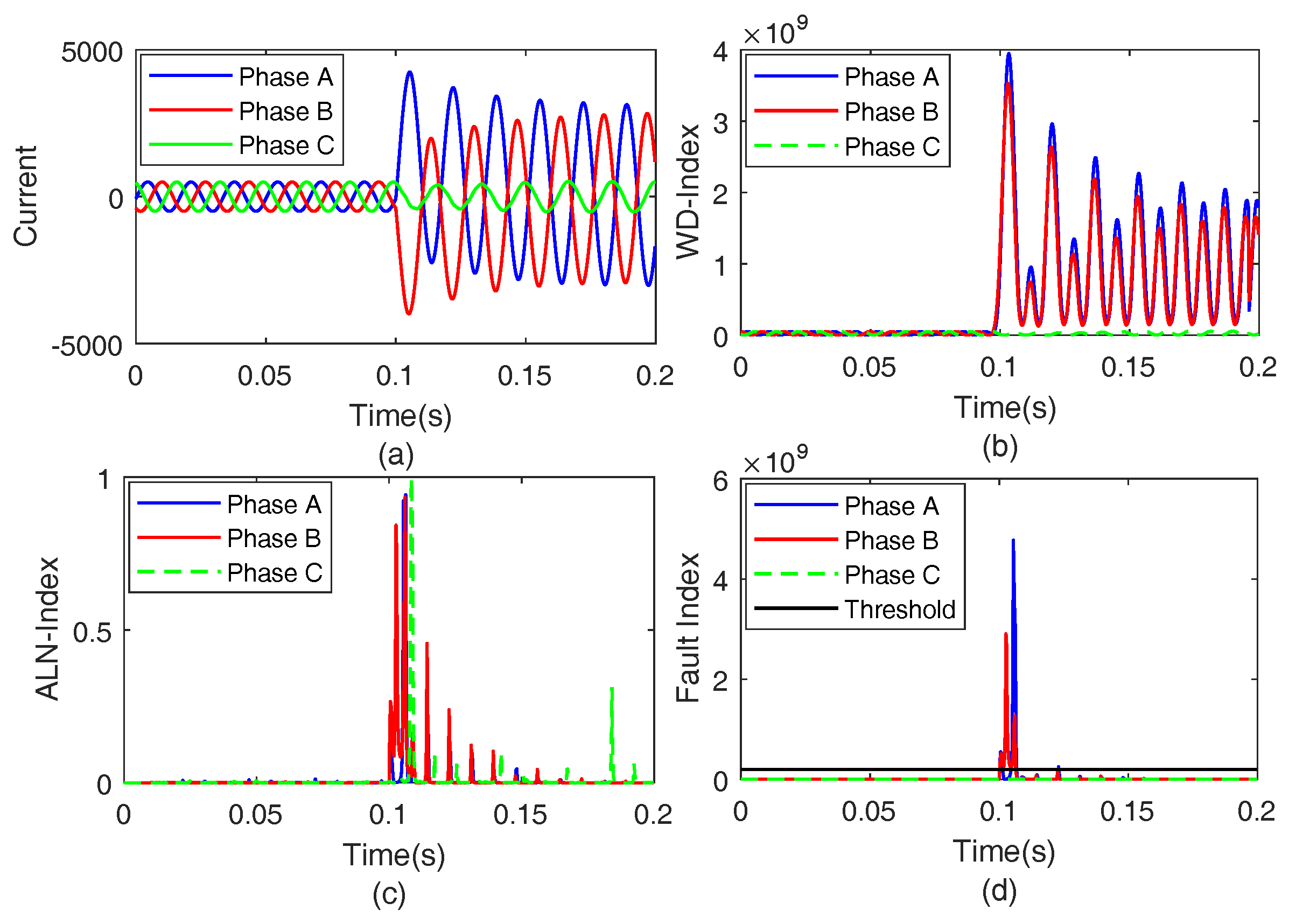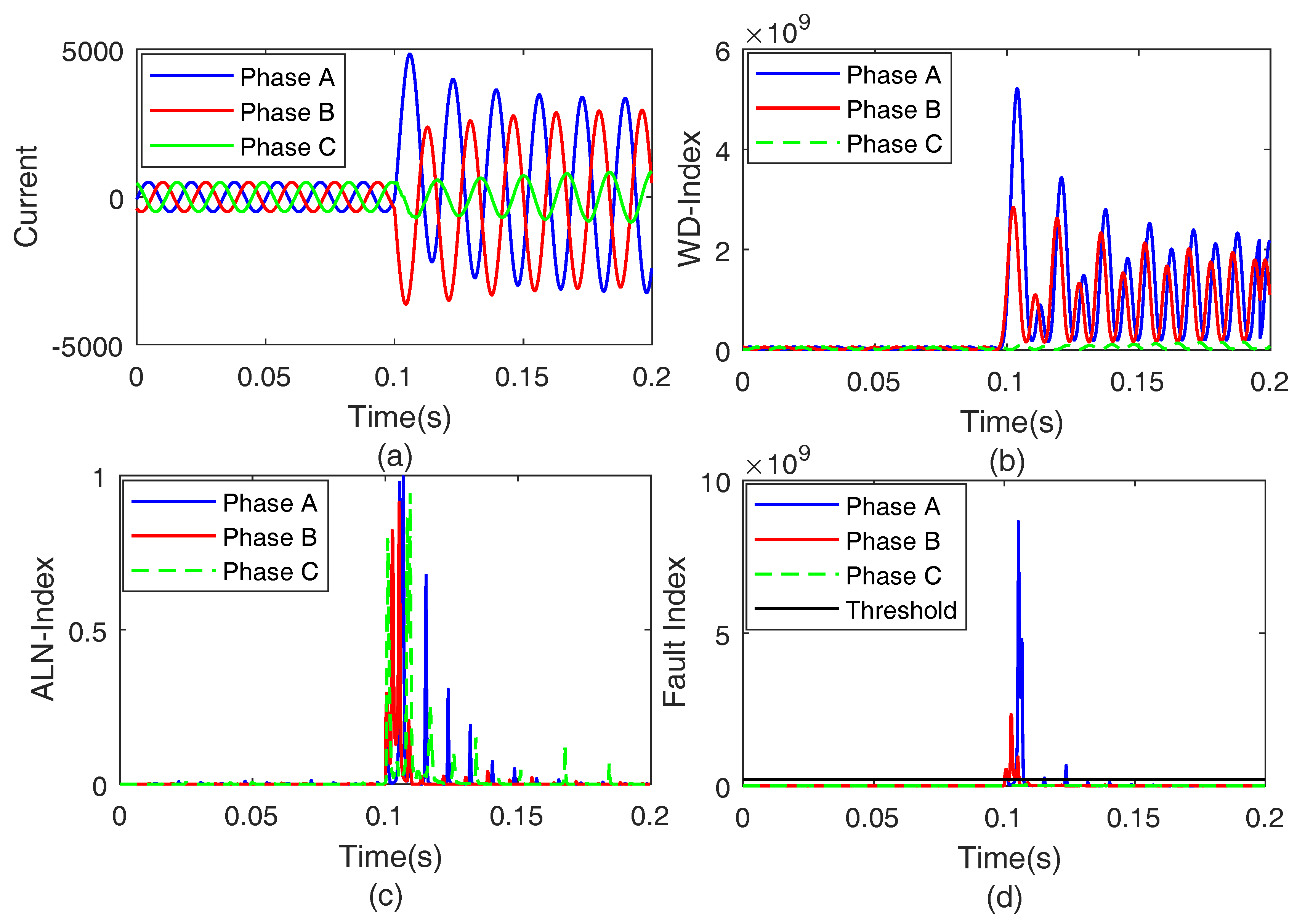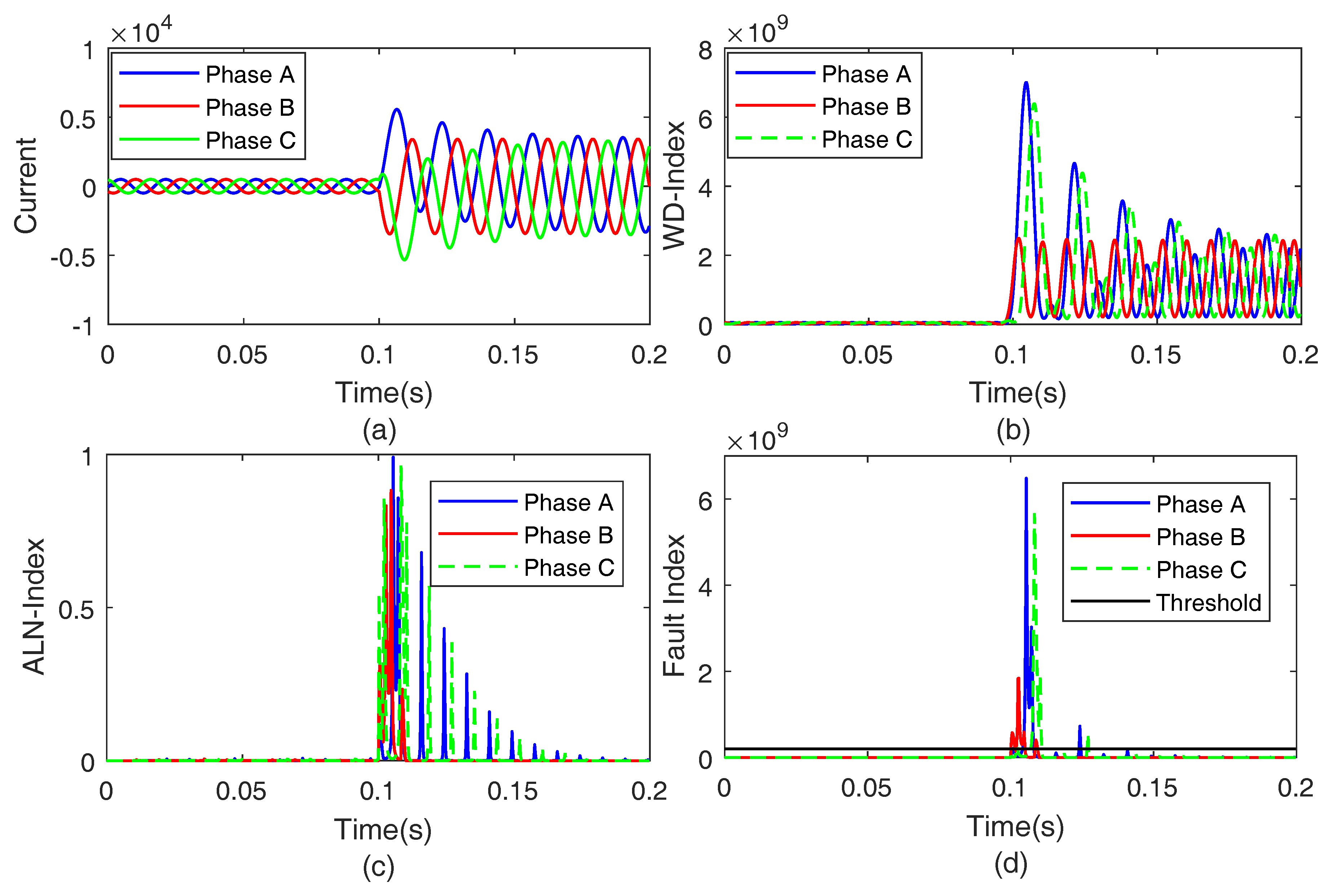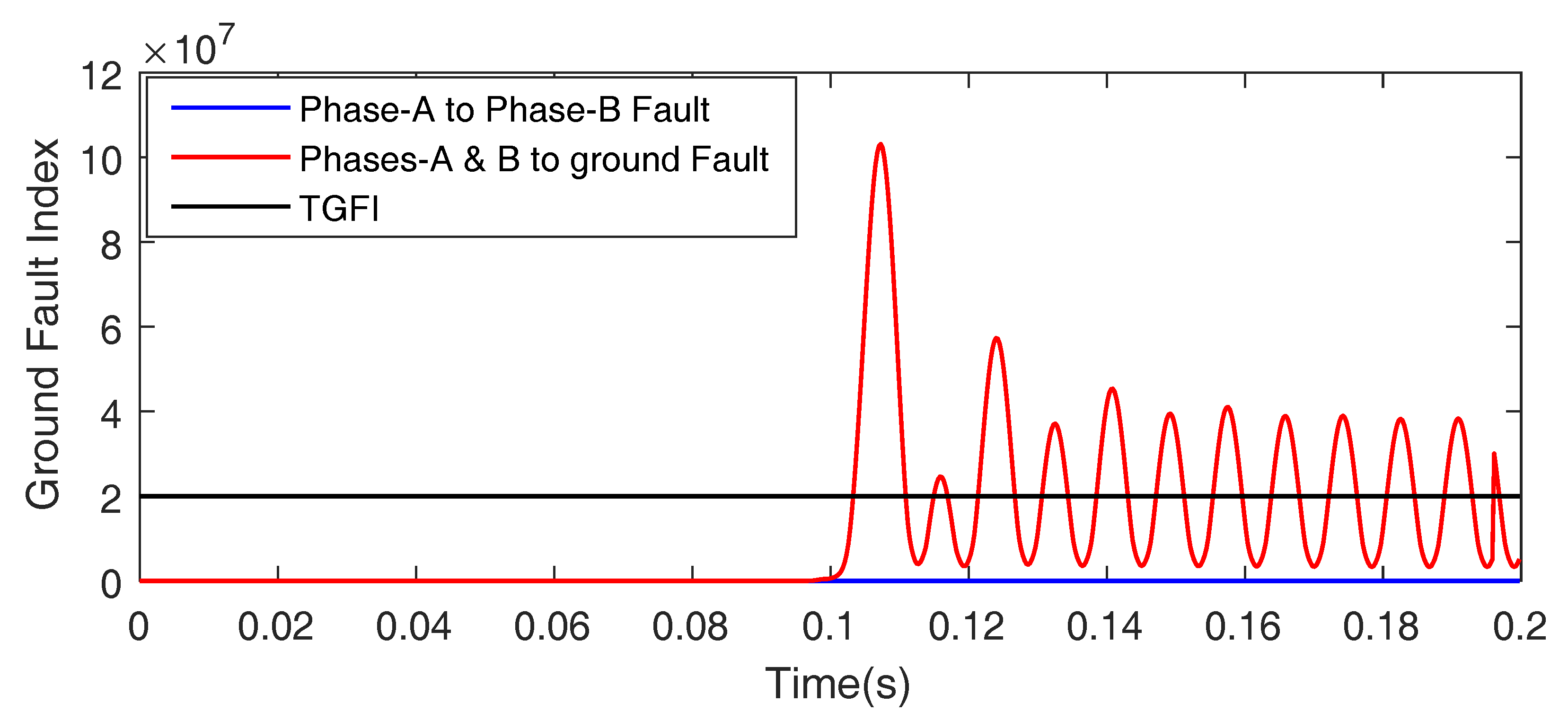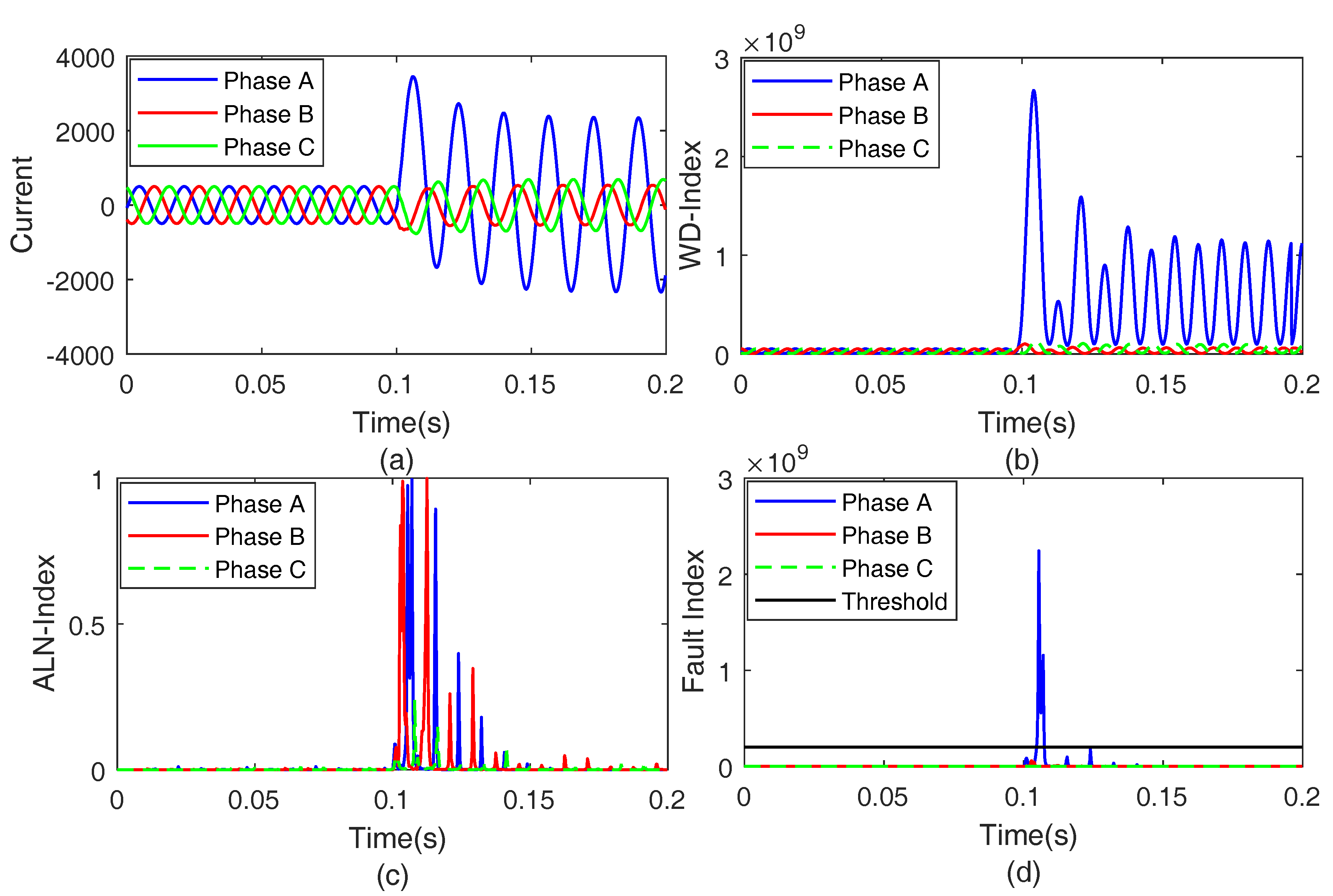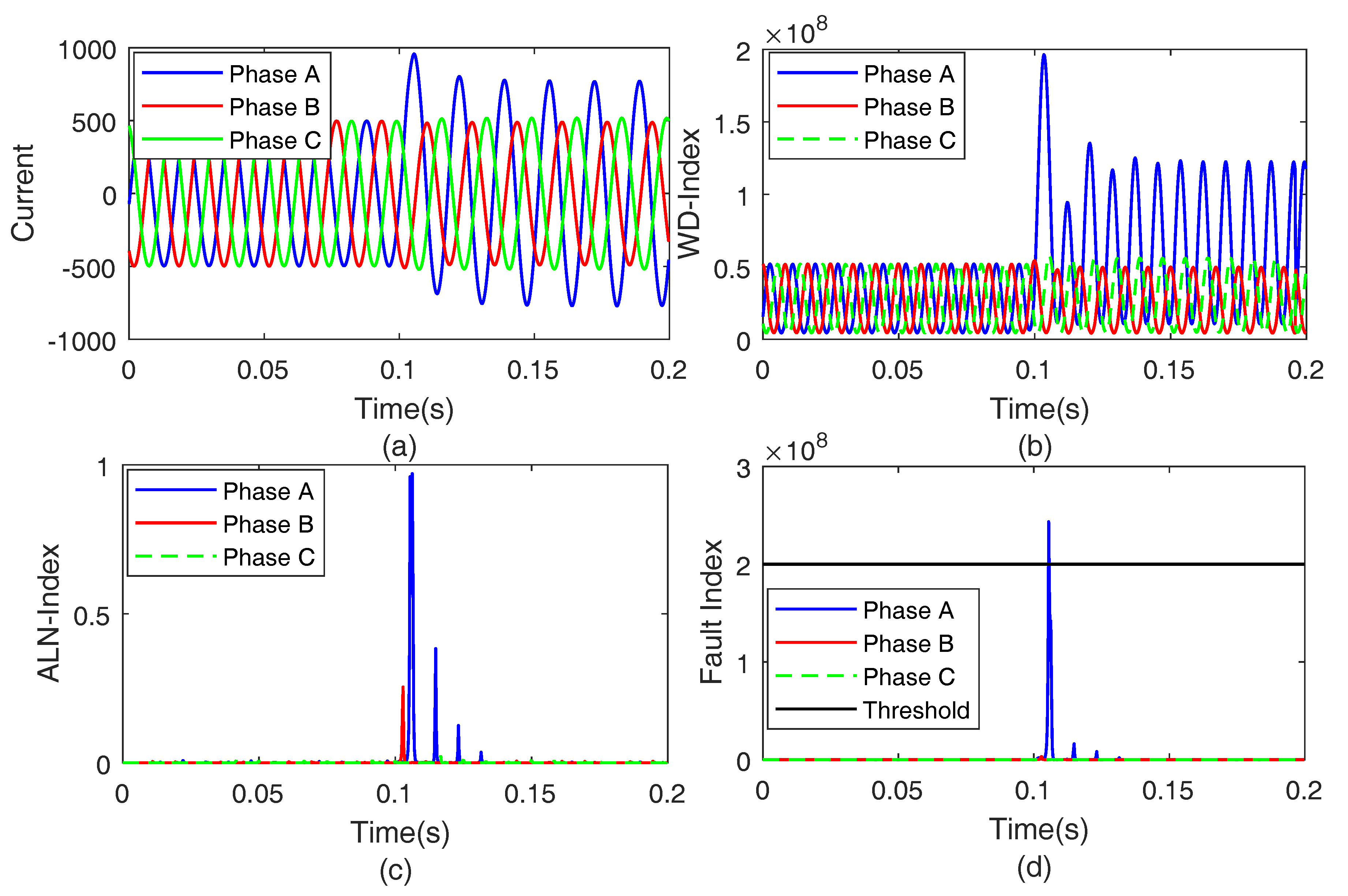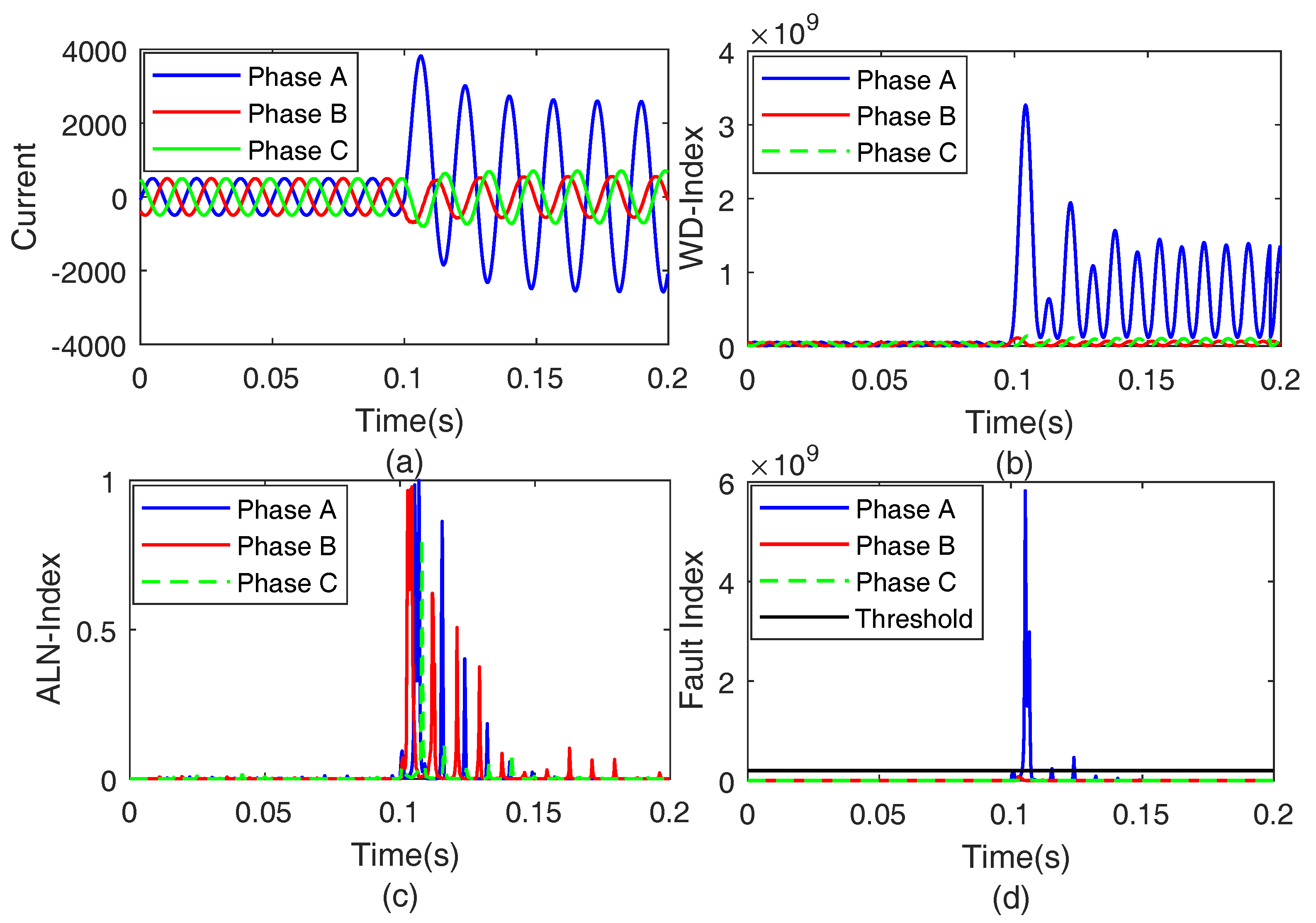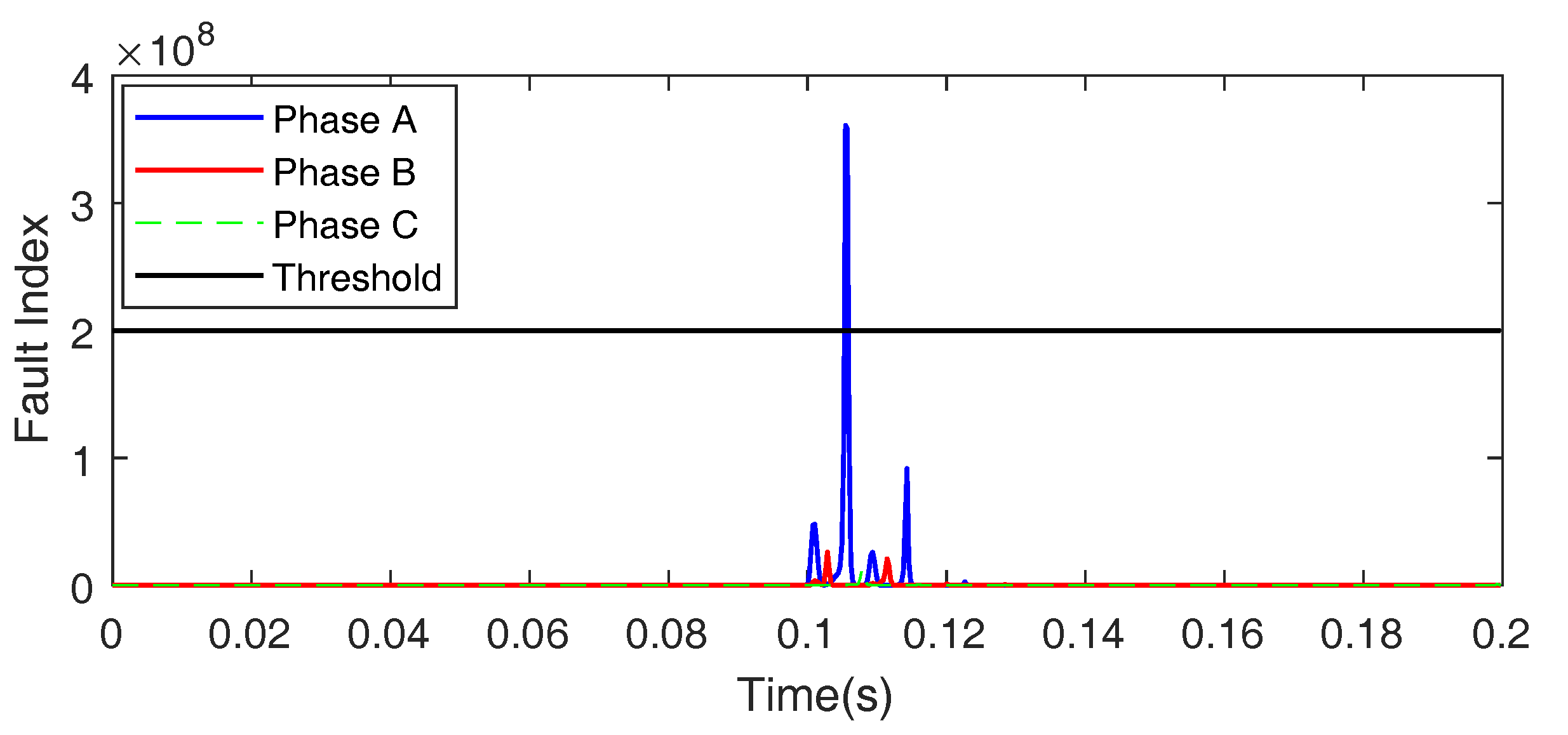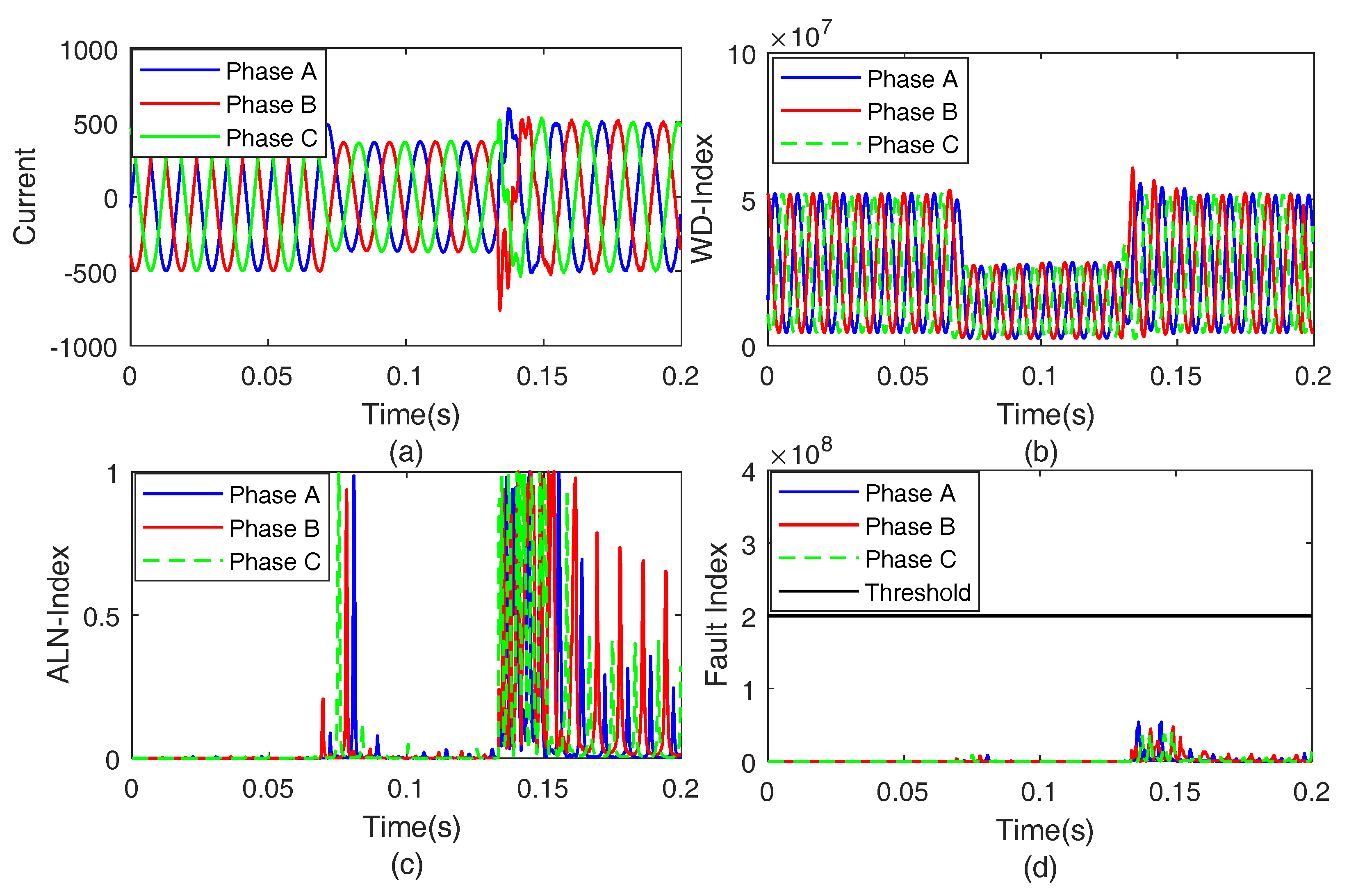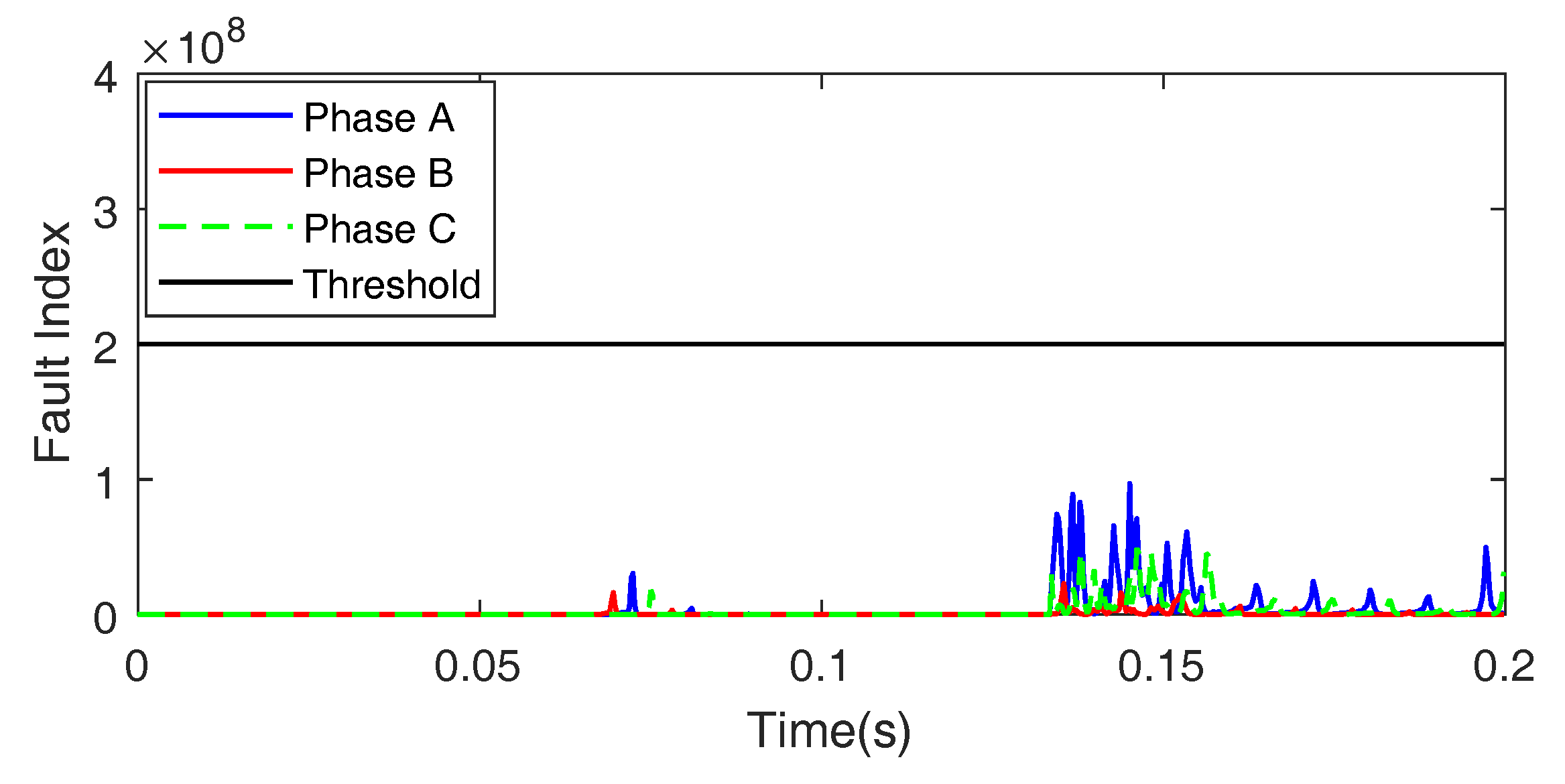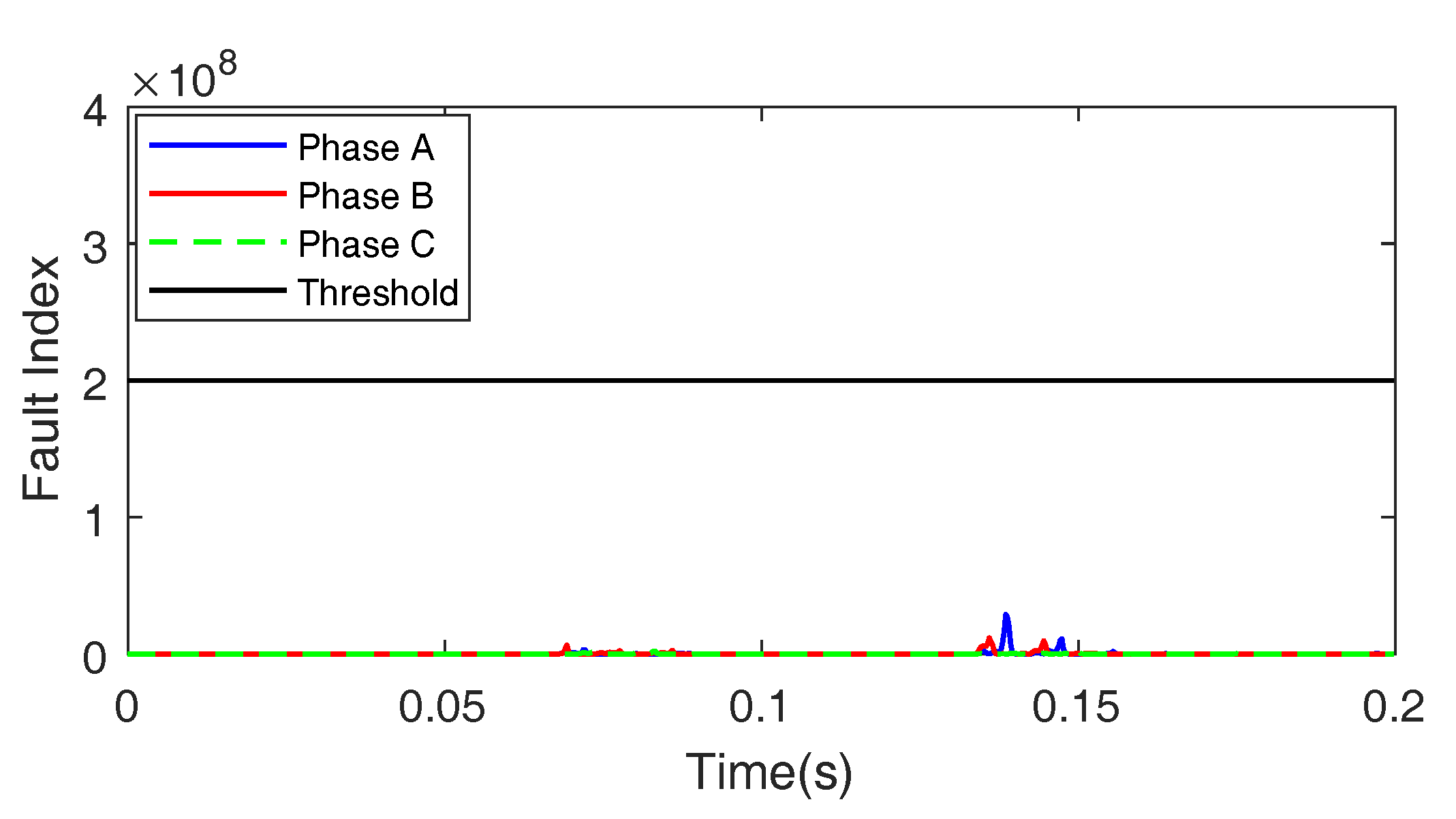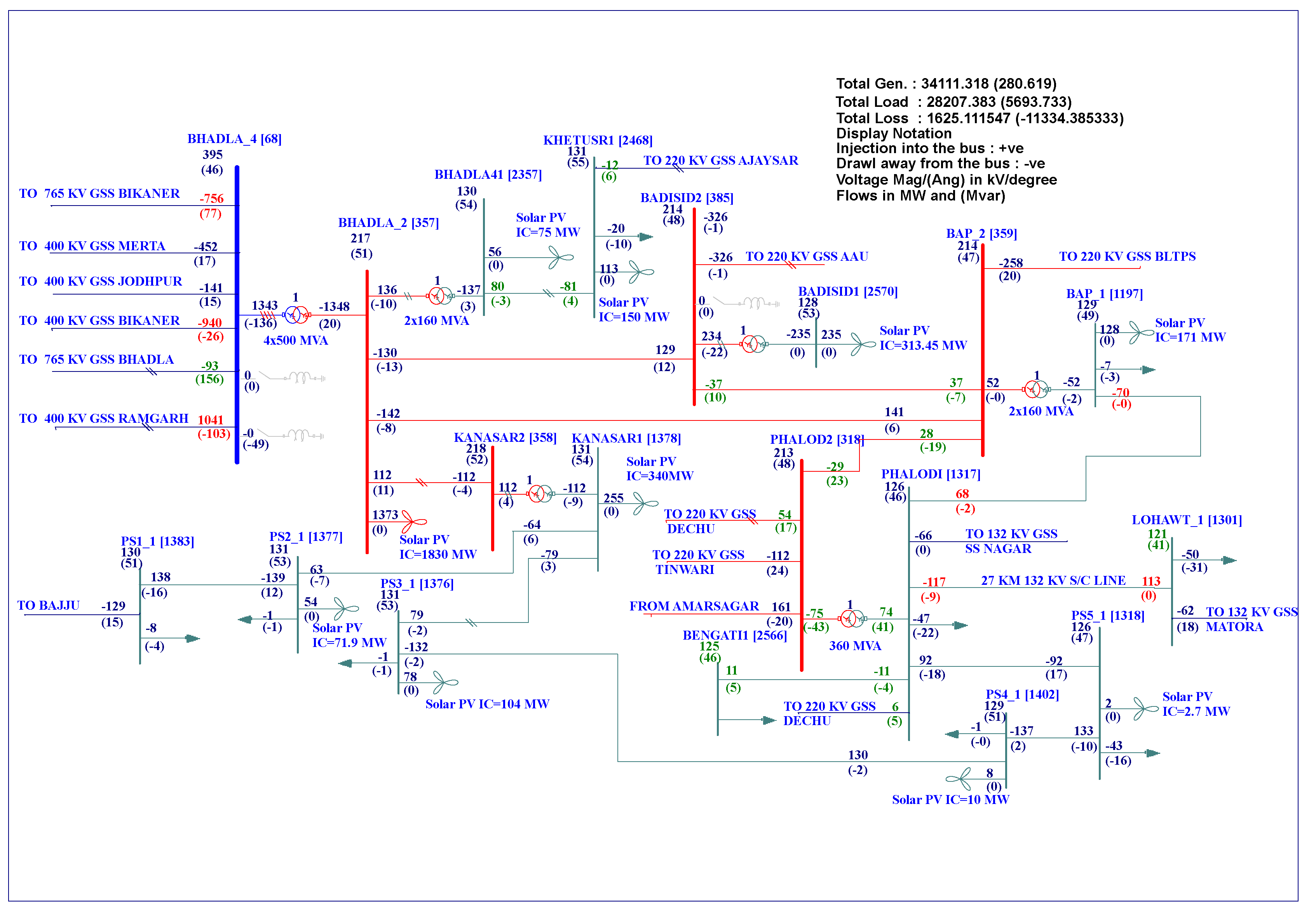Solar energy (SE) integration into the network of power system networks is continuously increasing to meet the decarbonisation targets. This will change the fault level, network topology and the system’s stability. Fault levels become intermittent in nature due to uncertainties of solar energy which depend on the environmental conditions [
1]. This may result in the failure of the operation of existing protection schemes due to the pre-set values. This has forced the design and selection of a suitable protection scheme for the reliable operation and control of the power system with a high penetration level of SE. Protection systems deployed for the power system network with SE integration must be independent of events which include direction of power flow, fault current, unbalanced loads, variable generation, and plug and play generators [
2]. This can be achieved by the use of signal processing and machine learning techniques in the field of protection. An elaboration along with the relative performance of various methods for the detection of faults in the solar PV-based system is presented in [
3] where the authors discussed various methods for the recognition of faults on both direct current (DC) and the alternating current (AC) side of the solar PV interfaced grid. This study is also effective in differentiating faulty events from islanding events. A detailed study of the challenges associated with the protection of grid integrated distributed generation (DG) and adaptive protection schemes for these systems are presented in [
4]. This study helps to select a protection scheme for RE integrated grids depending on the penetration level. A detailed study related to the application of signal processing techniques and intelligent methods such as artificial neural network (ANN), fuzzy set theory (FST), and expert system (ES) in the field of the protection of DG sources in an integrated power system is presented in [
5]. This study is effective in selecting the most suitable protection scheme for the RE-based grids depending on the type of RE source, the type of generator and the penetration level. Harrou et al. [
6] proposed a fault detection method by reducing noise and false alarms in the solar photovoltaic (PV) integrated power network. This is based on a multi-scale representation of the Wavelets. This method is effective in monitoring faults on a DC bus with a solar PV system. This protection scheme is capable of providing protection in the presence of noise using multiscale representation. In [
7], the authors proposed a protection scheme for a solar PV-integrated micro-grid using a deep convolution neural network (CNN) which is effective under the intermittent nature of solar radiation. This has the merit of identifying the discriminatory features with a reduced computational cost. Valencia et al. [
8], proposed a special protection scheme (SPS) for the Chilean grid which helps to increase the penetration level of solar energy. This was achieved in terms of technical and economic incentives by managing the congestion and dynamic response. In [
9], the authors introduced an algorithm based on fast recursive discrete Fourier transform (FRDFT) for the protection of a distribution system integrated with DG. This is a novel, fast and adaptive relay technique for relay systems which is effective for obtaining the optimal protection settings when system conditions are continuously changing. A wavelet packet transform (WPT)-supported technique for the identification of faults in the solar PV system integrated grid using energy- and standard deviation-based indices is reported in [
10]. It is established that performance of WPT is superior than the WT due to the use of detailed filtering for finding all frequencies superimposed on the signal. A better performance was achieved by this method due to its detailed filtering of signals.
A scheme for the protection of the power system network interfaced with a solar PV generation plant using discrete wavelet transform (DWT) is presented in [
11]. However, the performance of this method is affected by the presence of noise. In [
12], the authors proposed an algorithm supported by the Stockwell transform for the protection of the power system network integrated with solar PV generation. This algorithm overcomes the demerits of the DWT-based scheme; however, it has the disadvantage of a low protection speed due to the requirement of the large size of the input data. Hence, a new algorithm for protection of the power system with SE penetration which has the merits of a high protection speed, independently of the direction of the power flow, fault current, nature of loads and generation, needs to be designed. These are considered as key factors in this work and the main contributions are detailed below.
The contents of this article are arranged into ten sections. After the introduction in
Section 1,
Section 2 describes the IEEE-13 node test network, incorporated with SE. The algorithm of the proposed protection scheme is detailed in the
Section 3.
Section 4 includes simulation results for the fault identification. Fault classification results are included in
Section 5. The results for various case studies are included in
Section 6. The discrimination of switching transients from the faulty transients is discussed in
Section 7. The validation of the protection scheme on the real-time network of Rajasthan State in India is included in
Section 8. A performance comparison of the proposed protection scheme with other existed schemes in the presence of solar energy is detailed in
Section 9, followed by
Section 10, which presents the conclusion.
